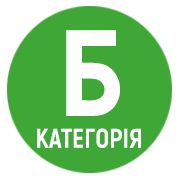A STUDY OF THE IMPACT OF SYNERGISM IN THE TRANSLATION OF LITERARY TEXTS INTO ENGLISH ON THE PRESERVATION OF THE AUTHOR'S STYLE
DOI:
https://doi.org/10.32689/maup.philol.2024.4.6Keywords:
author's style, translation studies, transfer, language and cultural systemsAbstract
Translation is a complex process, an important element of language contact that occurs when two languages exist side by side. In today's world, globalisation and translation are interconnected, as they contribute to the social and economic integration of countries. The translation is often controversial, as its nature raises questions about preserving the original meaning and cultural nuances. Literary translation, in particular, occupies a special place in cultural exchange, acting as an interpreter of the customs and traditions of different nations. The purpose of the proposed work is to study the impact of synergy in the translation of literary texts on the preservation of the author's style. By analysing the scientific literature, the results demonstrate that the translation of literary texts is a complex process that involves maintaining a balance between the transmission of meaning and the author's style. In this context, translation synergism opens up new perspectives in literary studies, allowing researchers to go beyond the simple transformation of a text from one language into another. Synergism implies a coherent interaction between the original text, cultural context, translation strategies, and audience expectations. Translation serves not only to preserve but also to update the original text so that it can ‘survive’ in new cultural and linguistic environments, giving it new meanings and the ability to influence audiences of different eras. The process of translation inevitably involves a creative approach to re-reading and adapting the original. In today's era of cross-border and interdisciplinary literary research, synergy in translation contributes to a deeper understanding of a literary text. A creative approach to translation that emphasises the interaction between language and cultural systems ensures that the stylistic integrity of the original is preserved. The concept of translation synergy serves as the basis for the development of translation studies. It allows us to analyse the role of the translator as a mediator and co-creator who adds new aesthetic and cultural significance to the text. Conclusions: The study of synergism in translation is becoming key to understanding both individual works and literary systems in general.
References
Верховцова О. М. Термінологія як частина словникового запасу мови. 2017. URL: https://er.nau.edu.ua/handle/NAU/39645 (дата звернення: 30.12.2024).
Джозеф Конрад. Серце темряви. Переклад з англійської – Марія Головко. Київ: «Знання». 2015. 175 с. ISBN 978-617-07-0320-0
Alaviyya N., Alisoy H. Anaphora in text: Echoing words, amplifying messages. Experimental Physics. 2023. Vol. 106. DOI: https://doi.org/10.5281/zenodo.10369937
Bohatyrets V., Kudelko Z., Melnychuk L. Growing Synergy between the Knowledge Society and Cognitive Translation Studies. 2021. URL: https://www.researchgate.net/publication/354402633_GROWING_SYNERGY_BETWEEN_THE_KNOWLEDGE_SOCIETY_AND_COGNITIVE_TRANSLATION_STUDIES (date of access: 30.12.2024).
Conrad J., Beirne C. Heart of darkness. Hear-a-Book. 1925. URL: https://elearning.centre-univ-mila.dz/a2024/pluginfile.php/76782/mod_resource/content/1/Heart%20of%20Darkness%201.pdf (date of access: 30.12.2024).
Dinh H. Synergic concepts, lexical idiosyncrasies, and lexical complexities in bilingual students’ translated texts as efforts to resolve conceptual inequivalences. Languages. 2022. Vol. 7(2). P. 94. DOI: https://doi.org/10.3390/languages7020094
Hurskaya V. Approaches to Personalizing the Learning Process in Teaching English with the Help of Artificial Intelligence. Академічні візії. 2023. Vol. 18. URL: https://academy-vision.org/index.php/av/article/view/1484 (date of access: 30.12.2024).
Junining E., Kusuma V. A. M. C. Translation strategies for translating a news article. LiNGUA. 2020. Vol. 15(1). P. 79–90. DOI: https://doi.org/10.18860/ling.v15i1.9562
Khramchenkо D. The power of synergy in discourse: Exploring persuasive language in English mass media. Indonesian Journal of Applied Linguistics. 2023. Vol. 13(2). P. 368–379. DOI: https://doi.org/10.17509/ijal.v13i2.63068
Khudaybergenova Z. About the concept of "translation strategies" in the translation studies. 2021. URL: https://acikerisim.bartin.edu.tr/handle/11772/6647 (date of access: 30.12.2024).
Nykyporets S. S. Contemporary challenges and methodological issues in the translation of English texts into Ukrainian. «Наукові горизонти ХХІ століття: мультидисциплінарні дослідження»: Матеріали Міжнародної наукової конференції (м. Ужгород, 16-17 травня 2024 р.). Ужгород, 2024. С. 982–986. URL: https://ir.lib.vntu.edu.ua//handle/123456789/43303 (дата звернення: 30.12.2024).
Plyth P. S., Craham C. P. Translation affects literary and cultural systems: How to observe the features of translation? Applied Translation. 2023. Vol. 17(1). P. 7–15. DOI: https://doi.org/10.51708/apptrans.v14n1.1141
Rustamov I. T. Linguistic and cultural aspects of literary translation and translation skills. British Journal of Global Ecology and Sustainable Development. 2022. Vol. 10. P. 168–173. URL: https://www.journalzone.org/index.php/bjgesd/article/view/158 (date of access: 30.12.2024).
Syvachuk N., Yuhan N., Posmitna V., Opryshko N., Kobzei N. Linguistic-literary synergies in modern Ukrainian philology. Revista Eduweb. 2024. Vol. 18(3). P. 252–263. DOI: https://doi.org/10.46502/issn.1856-7576/2024.18.03.19
Wang Y., Zhang W., Zhou C., Jin C. High fidelity scene text synthesis. 2024. URL: https://arxiv.org/abs/2405.14701 (date of access: 30.12.2024).






